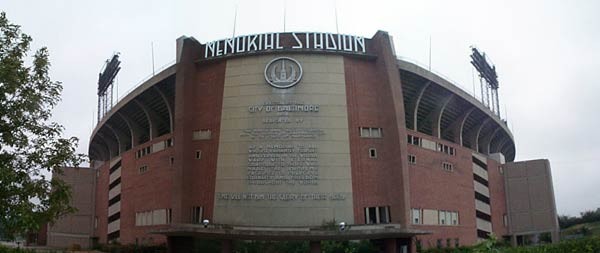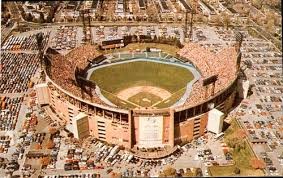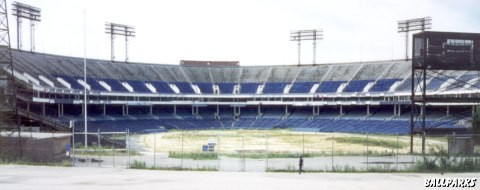Memorial Stadium, Baltimore (1954-2001)
Introduction
Text-to-speech Audio
Images
Memorial Stadium was home to the Baltimore Colts

An aerial view of the stadium, which was demolished in 2001.

View of the inside of the stadium from the opening in center field

Backstory and Context
Text-to-speech Audio
Memorial Stadium was given its name in honor of locals that lost their lives during WWI and WWII. Reconstruction of the stadium began in 1949 to help increase capacity due to the success and popularity of the Baltimore Orioles. The newly renovated stadium was completed in 1950 at a cost of $6.5 million.
The stadium actually underwent several renovations and expansions over the years, and by 1961 there were 49,000 seats. By 1964 the capacity for baseball was 54,000 and 56,000 for football when they added two sections to the upper deck.
The new design was also to help host professional football with a horseshoe-shaped deck facing north for better field views. It hosted its first professional sports game when the newly arrived Baltimore Orioles host the Chicago WhiteSox on April 15th, 1954. Over the following decades, Memorial Stadium was home to greats like Frank Robinson, Brooks Robinson, Jim Palmer, Eddie Murray--all hall of fame Orioles players--and Johnny Unitas, longtime quarterback for the Colts.
It was also the fourth ball park Ernie Harwell called home from the season it was opened until 1959. The Orioles were the last team he covered before moving to Detroit where he spent the rest of his career. He was the lead broadcaster for the team in 1955 even when working with legendary Orioles broadcaster, Chuck Thompson. Harwell came back throughout the years, but as a visitor. In fact, in 1991 he called the last game the Orioles played at Memorial Stadium while there with the Tigers. Everyone thought that would also be the last game Harwell would call because he was told that season was his last season (he got his job back two years later).
The stadium had many nicknames such as the Old Grey Lady on 33rd st. and The Worlds Largest Outdoor Insane Asylum.
Sources
"Memorial Stadium," Ballparks of Baseball, http://www.ballparksofbaseball.com/ballparks/memorial-stadium/, accessed December 18, 2017.
"Memorial Stadium," Wikipedia entry, https://en.wikipedia.org/wiki/Memorial_Stadium_(Baltimore), accessed December 18, 2017.
https://ballparks.com/baseball/american/memori.htm
